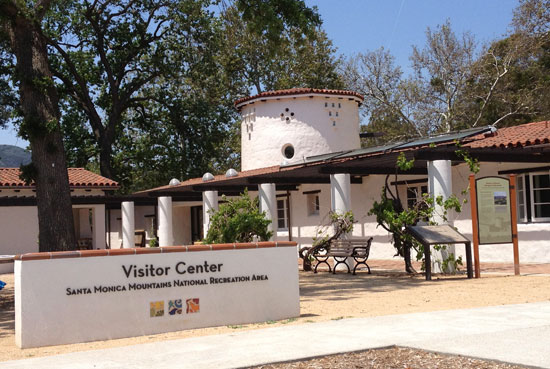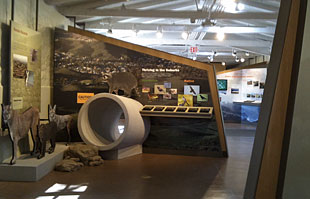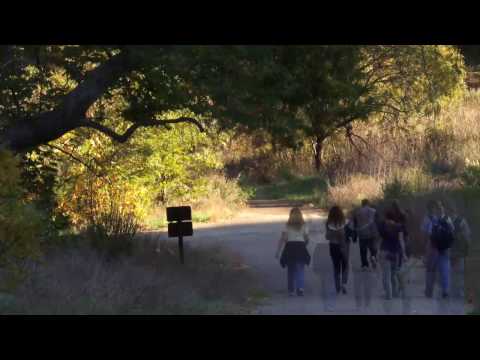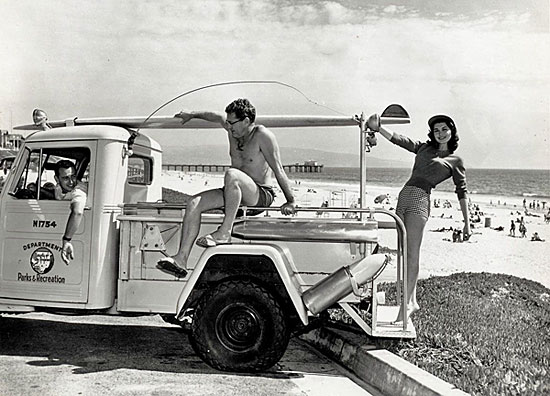A mountain welcome
Few wilderness areas are as easy to visit as the Santa Monica Mountains—or as challenging for the average visitor to understand.
Sprawled over 153,000 acres and stretched along 44 miles of coastline, the Santa Monica Mountains National Recreation Area is part federal, part state and part local. Its ownership is an alphabet soup of government agencies and nonprofits; its internal boundaries are a public-private jigsaw puzzle.
Just figuring out which trails permit dogs can be a project. Yet the closest thing it has had to a visitor’s center has been a far-off office in a Thousand Oaks municipal complex.
Now, after years of planning and study, the nation’s largest urban national park finally has built a true, central gateway where the public can stop for information about its trails, beaches, amenities and wildlife.
On June 9, the Anthony C. Beilenson Interagency Visitor Center will open to the public in the heart of the recreation area, on the grounds of the former King Gillette Ranch near Calabasas.
“This is fantastic,” said Lisa Soghor, deputy executive officer for the Mountains Recreation and Conservation Authority, which manages the ranch and co-hosted a press tour this week in advance of the grand opening. “To have it here, at the heart of the mountains, in the center of the recreation area, is just really a dream come true.”
Los Angeles County Supervisor Zev Yaroslavsky agreed.
“The King Gillette property is one of the most beautiful in the Santa Monica Mountains,” said Yaroslavsky, whose 3rdDistrict includes the recreation area. “It’s centrally located in the national and state park, making it a great location for the Visitors Center. And it’s rightly named after former Congressman Anthony Beilenson, who had so much to do with the preservation of the Santa Monica Mountains.”
The new center, near the intersection of Las Virgenes Road and the Old Mulholland Highway, will also reflect the colorful history of one of Southern California’s most storied ranches. The Spanish-style building, erected in 1928, is the former horse stable of a 588-acre estate developed by King Camp Gillette, the razor-blade baron, and designed by famed Los Angeles architect Wallace Neff.
After Gillette’s death, the ranch—which he described as “paradise on earth, California style”—had a cavalcade of quintessentially Californian owners. MGM director Clarence Brown, partied and filmed on it from 1935 until the 1950s. Then it was sold to the Claretian Order of the Catholic Church, which used it as a seminary until the mid-1970s.
As urban development encroached on the mountains, neighboring homeowners lobbied the state to buy and preserve it. But in 1978, the land was sold to the Church Universal and Triumphant, a New Age doomsday sect that renamed it “Camelot” and moved its headquarters into the verdant, mountain-ringed valley.
That incarnation lasted until the mid-1980s, when the church moved to a remote plot in Montana, where members began preparing for Armageddon. (“You have 10 million auras in Los Angelesand here you have wide open space,” the church leader, Elizabeth Clare Prophet, explained.)
In 1986, Soka University of America, a liberal arts college financed by a Japan-based lay Buddhist organization, bought the ranch and announced plans to build a campus. But by now, local homeowners and environmental groups were organized enough to block the development. The appeals and lawsuits lasted until 2005, when an unprecedented coalition of government agencies, including Los Angeles County, raised $34 million to buy the land and turn it into the recreation area’s gateway.
“As with many important parkland acquisitions, it took more years and more battles than we had anticipated—but it also consolidated the resolve of state, federal and local park agencies to make this happen,” said Joe Edmiston, executive director of the Santa Monica Mountains Conservancy.
Until now, the ranch has been mainly been known as the site of the reality TV show, “The Biggest Loser,” which leases the estate’s property. This week, however, the new Visitor Center stepped into the spotlight, with rooms full of colorful displays and exhibits and a top-of-the-line LEED Platinum certification for environmental sustainability.
“We are proud to say that this is the first ‘net zero’ Visitor Center in the National Park System,” National Park Service Acting Superintendent Lorenza Fong noted, adding that the center will produce all of its own energy through a photovoltaic solar energy system. The historic building was remodeled and preserved with $9.5 million in federal stimulus grants.
Named for the congressman who introduced the 1978 legislation creating the recreation area, the center will be jointly staffed and managed by the recreation area’s major operators: the National Park Service, the California State Parks, MRCA and the Conservancy.
At the press tour, rangers proudly showed off the front desk made from recycled materials and a “virtual postcard” booth that allows visitors to photograph themselves against a background of the recreation area’s breathtaking scenery.
Most impressive, however, was an interactive display that cuts through the confusion over which rules apply in which sections of the recreation area’s vast network of parklands. It’s a useful tool, because, even on the trails around the Visitors Center, they change. Because the National Park Service allows dogs and the State Parks don’t, for instance, only the immediate grounds of the center allow pets on leashes; cross a bridge onto the parts of the recreation area owned by the state or MRCA, and dogs are forbidden.
“It’s still an issue,” laughed NPS Supervisory Park Ranger Barbara Applebaum, education supervisor for the center. But with a touch of the screen, she was able to highlight a host of places within the recreation area that were perfect for every variety of visitor—families, bicyclists, wildflower enthusiasts, serious hikers, swimmers and even canines.
The Visitor Center is at 26876 Mulholland Highway, Calabasas, and free to the public. The Grand Opening, with food trucks, live music and activities for all ages, will be June 9 from 10 a.m. to 4 p.m. For more information, call 805-370-2301 or visit www.nps.gov/samo. For directions and a flier, click here.
Posted 5/31/12




















